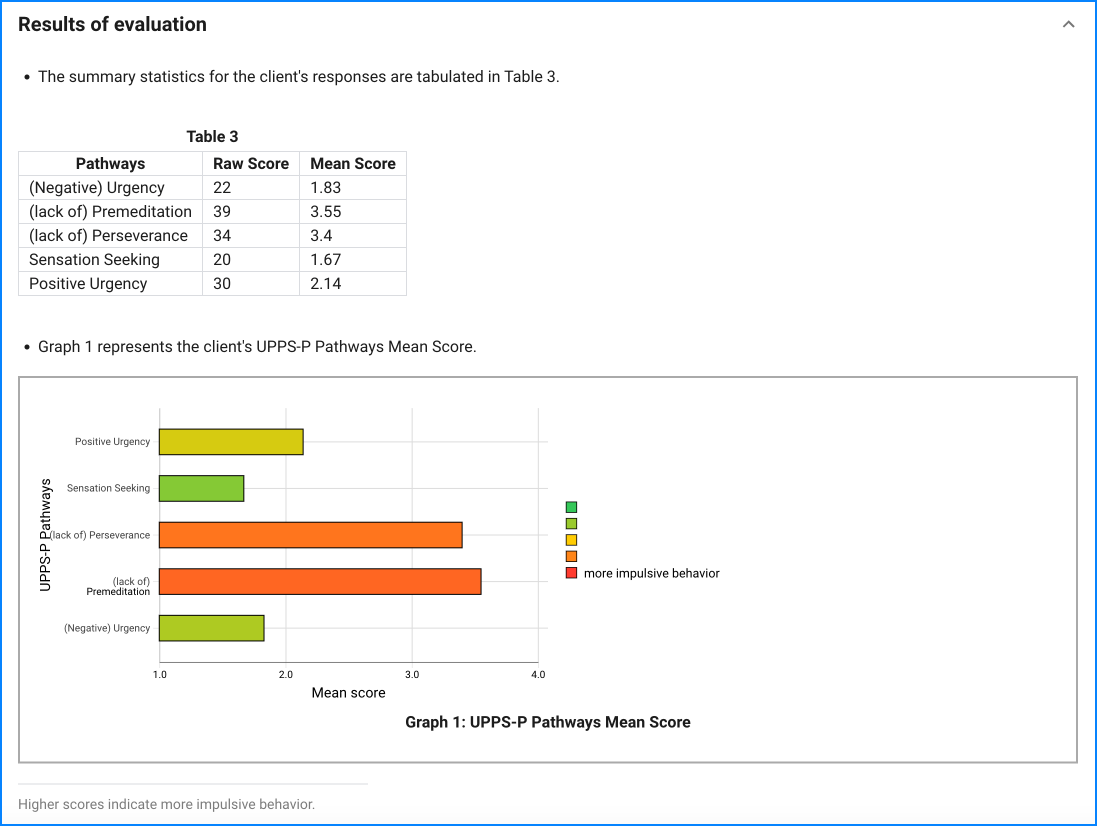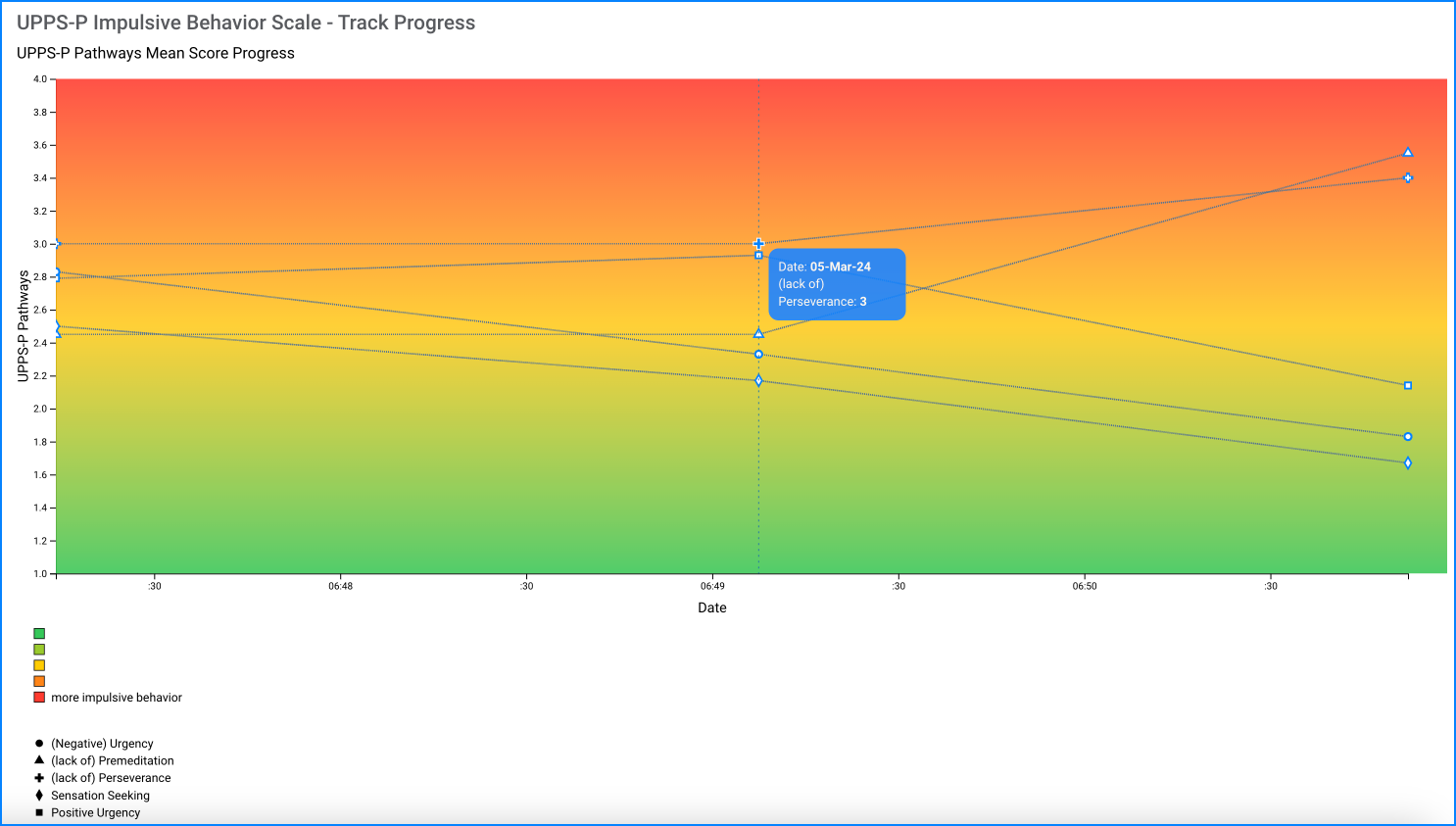This is a revised version of the UPPS Impulsive Behavior scale. This version, UPPS-P, assesses Positive Urgency in addition to the four pathways assessed in the original version of the scale-- Urgency (now Negative Urgency), (lack of) Premeditation, (lack of) Perseverance, and Sensation Seeking. The scale uses a 1 (agree strongly) to 4 (disagree strongly) response format. Because the items from different scales run in different directions, it is important to make sure that the correct items are reverse-scored. The authors suggest making all of the scales run in the direction such that higher scores indicate more impulsive behavior. Therefore, they include the scoring key for, (Negative) Urgency, (lack of) Premeditation, (lack of) Perseverance, Sensation Seeking, and Positive Urgency. For each scale, calculate the mean of the available items; this puts the scales on the same metric. The authors recommend requiring that a participant have at least 70% of the items before a score is calculated.
(Negative) Urgency (all items except 1 are reversed)
items 2 (R), 7(R), 12 (R), 17 (R), 22 (R), 29 (R), 34 (R), 39 (R), 44 (R), 50 (R), 53, 58 (R)
(lack of) Premeditation (no items are reversed)
items 1, 6, 11, 16, 21, 28, 33, 38, 43, 48, 55.
(lack of) Perseverance (two items are reversed)
items 4, 9 (R), 14, 19, 24, 27, 32, 37, 42, 47 (R)
Sensation Seeking (all items are reversed)
items 3 (R), 8 (R), 13 (R), 18 (R), 23 (R), 26 (R), 31 (R), 36 (R), 41 (R), 46 (R), 51 (R), 56 (R)
Positive Urgency (all items are reversed)
items 5 (R), 10 (R), 15 (R), 20 (R), 25 (R), 30 (R), 35 (R), 40 (R), 45 (R), 49 (R), 52 (R), 54 (R), 57 (R), 59 (R)
(R) indicates the item needs to be reverse scored such 1=4, 2=3, 3=2, and 4=1.




